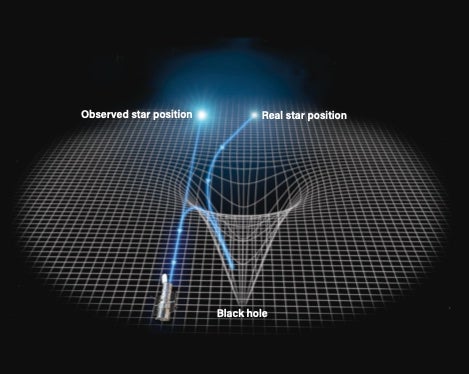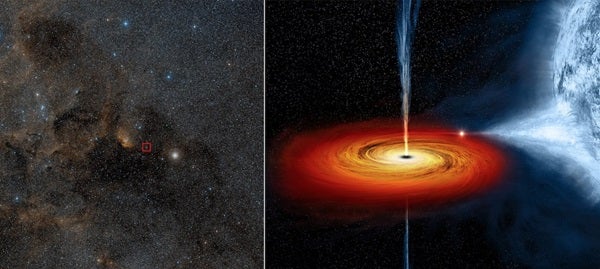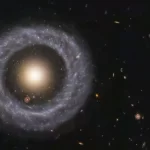Key Takeaways:
- In a groundbreaking 2022 discovery, astronomers led by Kailash Sahu identified the first-ever “rogue” black hole, challenging conventional wisdom regarding these enigmatic celestial objects.
- While black holes were initially dismissed as mathematical oddities, their existence was confirmed through a series of observations, starting with the Cygnus X-1 binary system in 1964.
- The recent revelation, made by Sahu’s team, points to the presence of countless unseen solitary black holes within the Milky Way, offering a profound shift in our understanding of these cosmic phenomena.
- To detect the rogue black hole, scientists employed a six-year study using a combination of microlensing and astrometry, signaling the potential for more such discoveries in the future.
- NASA’s Nancy Grace Roman Space Telescope, set to launch by 2027, is expected to further expand our knowledge of black holes by searching for similar microlensing events in the galactic center.
In 2022, a momentous discovery led by Kailash Sahu brought to light the existence of the first “lone wolf” black hole, marking a milestone in the study of these mysterious cosmic entities.
For years, black holes had remained elusive and enigmatic, often regarded as more of a theoretical concept than observable phenomena. Yet, Sahu’s team’s findings challenge this notion and hint at a multitude of solitary black holes lurking unseen within the Milky Way, transforming our perception of these celestial giants.
The concept of black holes dates back to the late 1700s when John Mitchell introduced the idea of objects with such immense gravity that not even light could escape. However, it was not until the early 20th century that German physicist Karl Schwarzschild refined the mathematical framework of black holes based on Einstein’s theory of relativity.

Even then, many scientists were skeptical of their existence. They struggled to accept the bizarre nature of these objects, where a vast mass is compressed into an infinitesimal singularity, surrounded by an event horizon from which nothing, not even light, can escape.
The discovery of the first black hole in the Cygnus X-1 binary system in 1964 was a turning point, as it confirmed the presence of these enigmatic entities. Nevertheless, the observation of black holes in the Milky Way remained limited to those in binary systems, which numbered only a few dozen. This led to the belief that the majority of the estimated 100 million black holes in our galaxy existed in isolation, hidden from direct view.

However, in July 2022, Kailash Sahu’s team presented compelling evidence of a solitary, rogue black hole. Situated 5,200 light-years away in the galactic center, this black hole possesses over seven times the mass of the Sun and moves at an extraordinary speed, challenging traditional theories about their formation. Scientists speculate that this black hole might have received a substantial kick during its birth, propelling it away from neighboring stars.
The discovery of this rogue black hole was the result of a meticulous six-year investigation using two complementary techniques: microlensing and astrometry.
Microlensing allowed astronomers to detect the mass of the lensing object by observing changes in starlight when a massive object passed in front of a distant star. Astrometry, which involved precise measurements of the object’s position, confirmed the lensing object’s mass. These combined methods ultimately revealed the existence of the elusive black hole.
The future holds the promise of more discoveries of isolated black holes, thanks to the upcoming Nancy Grace Roman Space Telescope, set to launch by 2027. By observing the galactic center for microlensing events similar to the one detected by Sahu’s team, this telescope is expected to reveal a wealth of hitherto unseen objects, including rogue black holes.
Such discoveries are critical for gaining a more comprehensive understanding of stellar-mass black holes, a group that may be more diverse than previously thought.
Aside from unveiling the secrets of rogue stellar-mass black holes, astronomers are striving to unravel the history and origins of their larger counterparts, the supermassive black holes residing at the centers of galaxies.
These supermassive black holes are believed to play a pivotal role in shaping the evolution of galaxies. While past observations have identified quasars, high-energy light-emitting objects associated with supermassive black holes, they are predominantly found in the distant past, making it challenging to understand their impact on modern galaxies.
This unresolved question centers on whether supermassive black holes co-evolved with their host galaxies or formed independently.
Two competing theories suggest different pathways for the formation of supermassive black holes. One posits that these black holes originated alongside galaxies during the universe’s early stages.
The other suggests that they evolved from the collision of numerous smaller black holes within densely populated star clusters. However, the scarcity of intermediate-mass black hole candidates has made it challenging to explore this question further.
The detection of gravitational waves from the merger of intermediate-mass black holes in 2019 was a significant step toward understanding these enigmatic entities. Yet, astronomers still have limited insights into their formation due to the paucity of such events.
The Laser Interferometer Space Antenna (LISA) mission, set to launch in the late 2030s, aims to make more precise gravitational wave measurements. This mission will open new avenues for studying black holes and their mergers, offering deeper insights into the mysteries surrounding these cosmic phenomena.
In the quest for knowledge about black holes, multi-messenger astronomy, which combines different types of observations such as light and gravitational waves, is proving invaluable.
Each small discovery brings us closer to understanding the complexities of our universe, offering a glimpse into the enigmatic and awe-inspiring realm of black holes.


